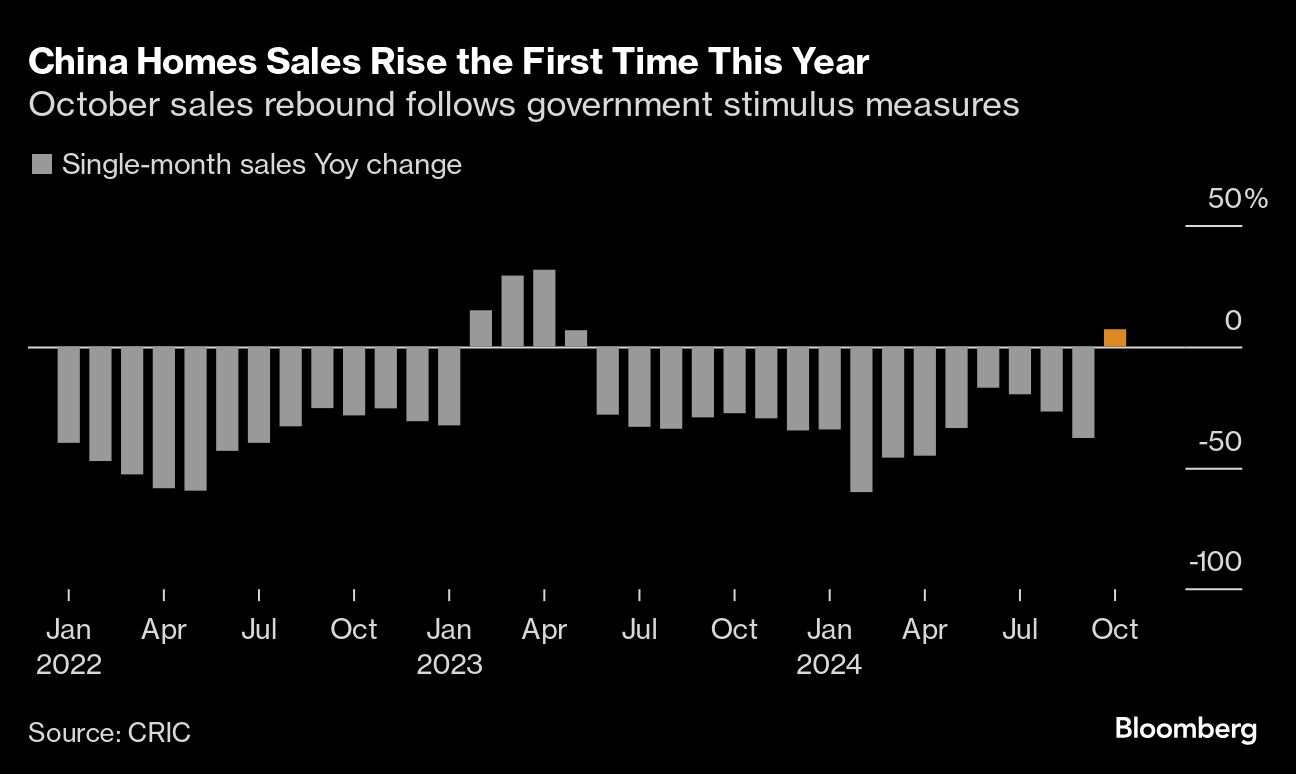
(Nov 1): China’s first major economic indicators after authorities unveiled their recent stimulus push suggest the economy has stabilised somewhat, with manufacturing and housing sectors showing tentative signs of recovery.
Both official and private measures of factory activity in October exceeded analyst expectations, while home sales saw their first rise this year. The data were the first to capture a full month’s activity following Beijing’s largest efforts to boost the economy since the Covid-19 pandemic.
The Caixin manufacturing purchasing managers index (PMI) unexpectedly rose to 50.3 last month from 49.3 in September. The reading from Caixin and S&P Global on Friday followed official surveys showing factory activity ended five months of contraction in October. The pace of growth exceeded most economists’ estimates.
“The effect of the stimulus on confidence appears higher than anticipated,” said Xing Zhaopeng, a senior China strategist at Australia and New Zealand Banking Group Ltd. “We expect fiscal stimulus will inject money into the economy soon to take the baton.”
In another sign of improved confidence, China’s residential property sales jumped 73% in October from the prior month. The value of new-home sales from the 100 biggest real estate companies rose 7.1% from a year earlier, the first year-on-year increase in 2024, according to preliminary data from China Real Estate Information Corp.
The benchmark CSI 300 Index of onshore Chinese stocks rose as much as 1% before paring gains on Friday. A Bloomberg Intelligence gauge of developers’ shares rose up to 2.1%.
The data sets amount to an early score card for China’s efforts to draw a line under the slowing economy. They suggest sentiment improved even before the policy response including fiscal measures is fully rolled out.
Starting in late September, Chinese policymakers unveiled a package of measures including interest rate cuts and ramped up support for stock and property markets with steps such as cutting borrowing costs on existing mortgages, relaxing buying curbs in big cities and easing down-payment requirements.
Investors now expect top legislators to approve a fiscal package at the end of next week, just days after the US presidential election.
“It’s still very early days, but it’s certainly possible that the strong PMI readings reflect stimulus expectations,” said Christopher Beddor, the deputy China research director of Gavekal Dragonomics. “Policymakers are going to need to deliver on the actual fiscal stimulus in order to sustain any gains.”
But with former president Donald Trump and Democratic candidate Kamala Harris locked in a dead heat, the US vote injects uncertainty over China’s growth outlook.
Chinese exports have powered the economy this year with shipments in the first three quarters soaring to the second highest value on record. A re-election of Trump, who has threatened to impose 60% tariffs on all Chinese products, could hurt a rare bright spot in China’s economy.
Chinese factories are already facing greater trade barriers as regions like the European Union (EU) have moved forward with tariffs on electric vehicles and a range of other Chinese exports.
Reflecting slowing global demand, new export orders shrank for the third straight month in October even as total orders rose, according to the Caixin survey. Exports growth slowed sharply in September, particularly when it came to shipments to the EU and the US.
The Caixin data gave other reasons for caution, with manufacturers reporting job cuts for a second straight month. The employment sub-index fell to its lowest level since May last year, with widespread declines in staffing among companies producing capital goods such as equipment and tools.
Economists project that China can achieve its official growth target of around 5% for this year, although it remains unclear if Beijing will do enough to boost consumer spending to avoid a spiral of falling prices. Deflation could risk a self-reinforcing cycle of declining spending, shrinking business revenues and job losses.
The Caixin results continued to be stronger than those from an official poll since last year. The two surveys cover different sample sizes, locations and business types with the private report focusing on small and export-oriented firms. The Caixin reading trailed the official figure only once in the last 12 months.
Uploaded by Tham Yek Lee



